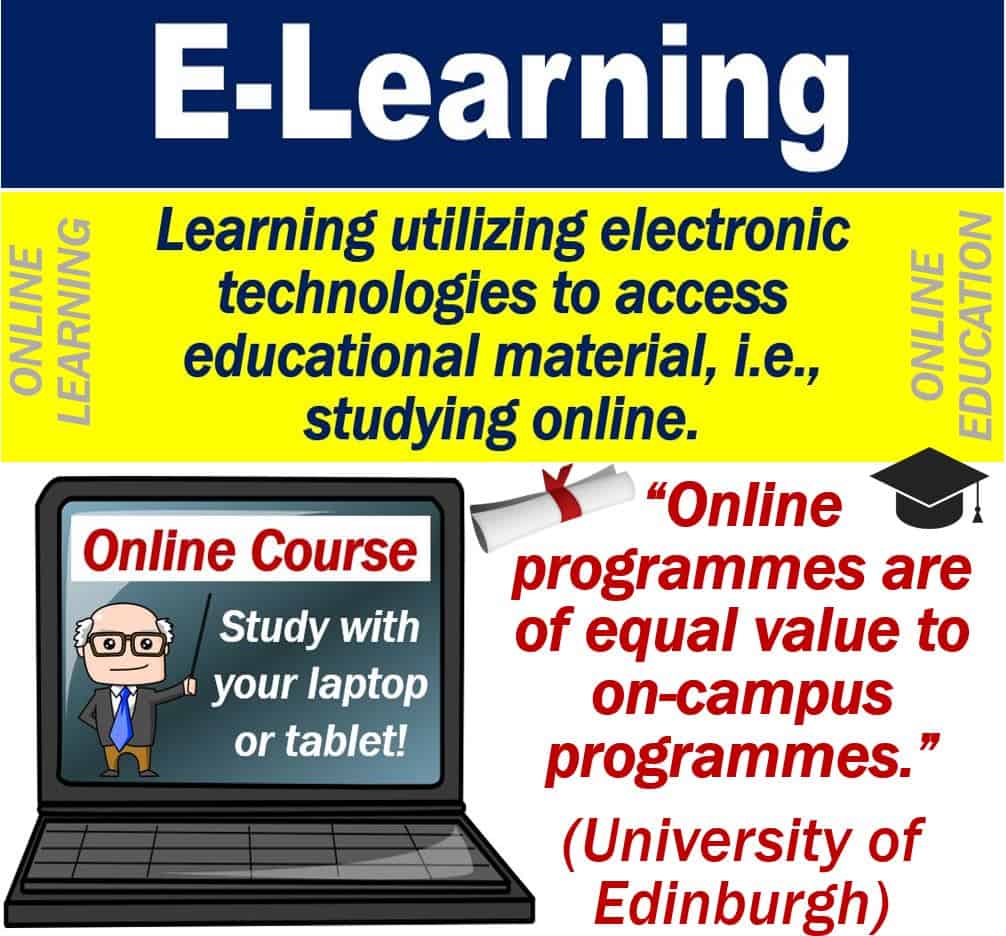E-learning refers to a learning system that we can obtain through the internet using an electronic device. We also call it Online Learning or Online Education. The ‘E’ in E-learning stands for ‘Electronic.’ Hence, the original term ‘electronic learning.’
The word ‘online,’ in this context, means with an Internet connection or via the Internet.
The term may also refer to a network that can provide knowledge and skills to one or more individuals. These networks are created by eLearning website builders (who are in charge of helping create personal teaching platforms to people without tech knowledge).
The network can provide the knowledge or skills either to everyone simultaneously or individually.
E-learning initial resistance
When the Internet first started, people were skeptical about this type of education.
However, as technology and learning systems improved, studying online became more popular. Today, millions of people study online all over the world.
Goodbye paper – hello devices
Subsequently, schools have replaced physical books with digital content that students can easily access on their electronic devices.
Environmental benefits
E-learning not only revolutionizes accessibility to education but also significantly reduces the carbon footprint associated with traditional classroom settings, contributing to a greener planet. Less paper means fewer trees to cut down. Also, if the student does not travel to school/college, they won’t be adding to the environmental pollution caused by transportation.
This reduction in resource consumption and commuter travel not only diminishes the strain on our natural ecosystems but also aligns with global efforts to lower greenhouse gas emissions, showcasing e-learning as a forward-thinking choice for sustainable education.
Employers keen on e-learning
Not only has E-learning benefited companies and schools, but also millions of workers.

Companies are more willing to give their employees access to coaching or courses. They are more willing for two main reasons:
- Several people can receive the educational material simultaneously.
- People can study without having to physically go to a college – without have to leave the workplace. In other words, they do not need to take time off work.
E-learning platforms
People can do an online course via a wide variety of different platforms, such as:
- MOOCs (Massive Online Open Courses), e.g. Coursera or Futurelearn.
- Virtual learning environment (VLE), such as Learn or Blackboard.
- Video streaming services, such as YouTube.
- Virtual instructor-led training (VILT), e.g. WebEx or webinars.
- Discussion boards.
- Forums.
- Podcasts.
MOOCs stands for Massive Online Open Courses. They are free online programs that several colleges offer. Even some of the world’s most famous and prestigious universities use them.
Some programs allow you to pay for the certification of the course. These courses can count as college credits, while others have value in the job market.
Ideal for many people
E-learning can be useful for people who work a full-time job. They are also great for full-time caregivers (UK: carers) and others who cannot physically get to a school regularly.
Also, instead of paying for a whole degree, you can access just the course you require.

E-learning vocabulary
There are several terms whose meanings are either the same as or similar to e-learning, online learning, and online education. Let’s have a look at some of them, their specific meanings, and an example of their usage in a sentence:
Distance Learning
This mode of education allows students to study without the need to physically attend a school or university.
Example: “With ‘Distance Learning’, geographical barriers in education are no longer an issue.”
Virtual Learning
It involves engaging with educational curricula in a simulated online environment.
Example: “‘Virtual Learning’ has made it possible for interactive classrooms to exist anywhere and anytime.”
Web-based Learning
This type of learning is delivered via the World Wide Web and can be accessed through Internet browsers.
Example: “Students taking advantage of ‘Web-based Learning’ can complete courses without traditional textbooks.”
Digital Learning
It encompasses all learning facilitated by technology or instructional practice that effectively uses technology.
Example: “‘Digital Learning’ broadens the scope and accessibility of education.”
